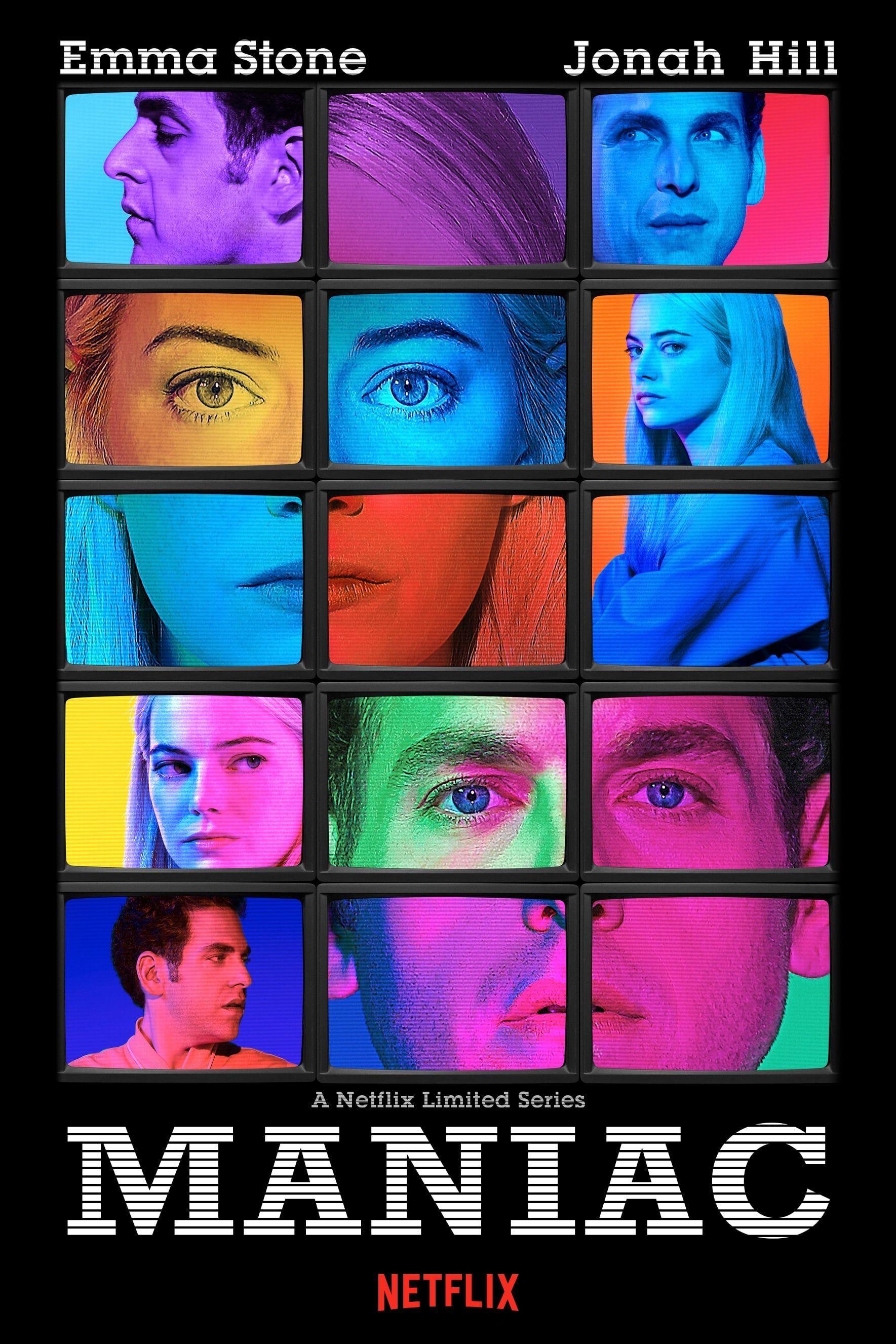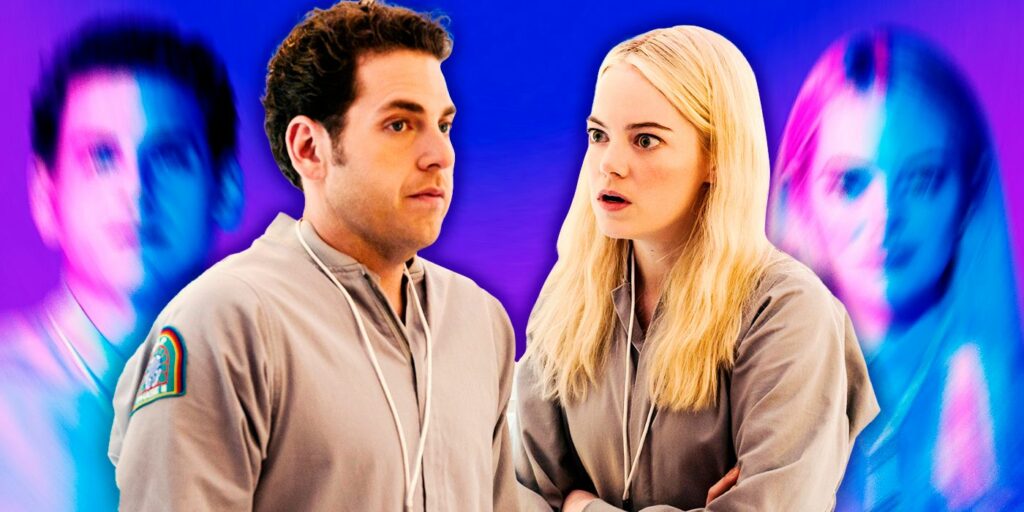Two-time Oscar-winning actress Emma Stone is arguably the leading lady in sustaining magical chemistry with her screen partners. Whether it’s Ryan Gosling, Andrew Garfield or Andy Samberg, Stone can make everything look so organic and natural with her co-stars. Another actor who once shared the screen with her is Jonah Hill in the 2007 iconic teen comedy Superbad, where they both light up every scene with their superfine comic ease. In 2018, however, Stone and Hill reunited again for Netflix’s psychological and futuristic miniseries Maniac.
Directed by Cary Joji Fukunaga (who also directed Season 1 of True Detective), Maniac is an emotionally resonant 10-episode journey that earned widespread critical praise upon release but remains an underrated gem for many. It’s a show that blends science fiction, dark comedy, and poignant psychological drama into a wholly unique package. Set in a strangely familiar yet technologically bizarre retro-future, it follows two broken strangers drawn together in a mysterious pharmaceutical trial promising to cure all their pain. For anyone captivated by the corporate dystopia of Severance, the heartache and altered realities of Eternal Sunshine of the Spotless Mind, or the ‘dream within a dream’ landscapes of Inception, Maniac is totally worth watching.
Stone and Hill Shine in the Underrated Retro-Futuristic World of Maniac
Maniac is Loosely Adapted from a 2015 Norwegian Series
Initially, the idea of Emma Stone and Jonah Hill playing vulnerable and messed-up characters may appear odd, but it’s fair to say that they both delivered in this show. In Maniac, Stone and Hill shed their comedic skins to play Annie Landsberg and Owen Milgrim, two individuals with a lot of trauma and personal baggage. Stone’s Annie is abrasive, sharp-witted, and fiercely guarded, yet she is dealing with immense grief and guilt surrounding the death of her younger sister, Ellie (played memorably in flashbacks and trial sequences by Julia Garner).
Hill’s Owen is the gentle, marginalized son of a wealthy industrialist family, potentially living with schizophrenia, haunted by visions of a non-existent brother, who looks like an existing brother, Jed (Billy Magnussen), and suffocated by familial pressure. Both actors deliver performances of incredible range and vulnerability, navigating their characters’ fragile “real-world” states and the different personas they come across within the drug trial’s simulated realities later in the series.
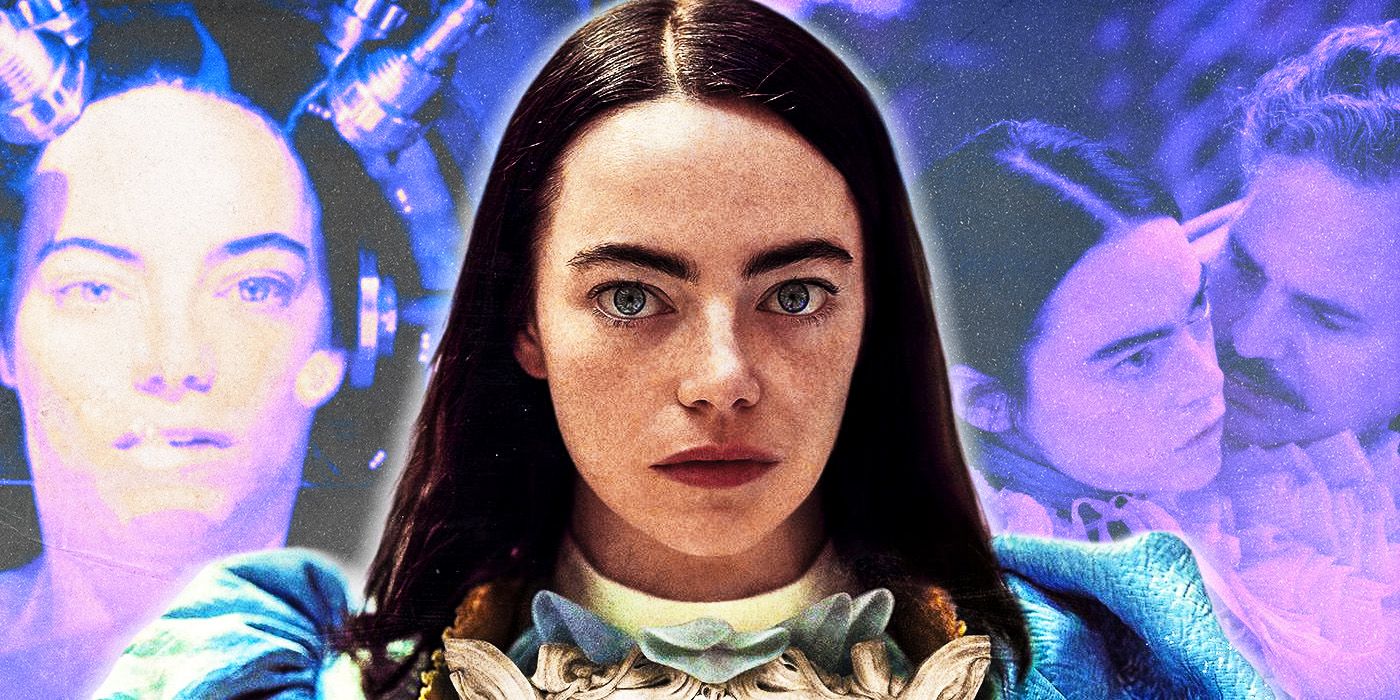
Related
Throughout 2023’s Poor Things, Greek director Yorgos Lanthimos carves out a thought-provoking, yet empowering ending for Emma Stone’s Bella Baxter.
Fans of Stone’s work in Poor Things can definitely pick up on Bella Baxter in Annie while she sits on the experimental chair with that wired ‘Frankenstein’ headset around her head. Her navigation into a vein of dark, wounded comedy feels like a direct foreshadowing moment of her later acclaimed film work. Annie and Owen’s lives unfold against a retro-futuristic backdrop — a vision of New York City that feels like a melancholic echo of the 1980s filtered through a slightly broken technological lens.
This isn’t a world of sleek screens, but of clunky computers, CRT monitors, and dot-matrix printers. From the very first episode, the show establishes that the people of the city are longing for genuine human connection, which has become strangely commodified. In the show, lonely souls can hire companions via “Friend Proxy” services, or offset costs by subjecting themselves to intrusive, human-delivered targeted ads through the “Adbuddy” program.
Here and there, viewers can glimpse tiny sanitation robots (“PoopBots”) patrolling the streets with comical inefficiency. While Annie lives in a shared and messy dormitory, Owen, despite belonging to a wealthy family, lives in a small studio apartment by choice because he wants to stay ‘invisible’ and be away. This tangible, slightly grimy, analog-feeling future creates an immediate atmosphere of isolation and systemic absurdity, perfectly setting the stage for Annie and Owen’s desperate gamble on a pharmaceutical miracle cure.
Maniac Explores Human Connection in a Wired, Weird World
Desperate for relief, Annie scams her way into the drug trial at Neberdine Pharmaceutical Biotech (NPB), while Owen lists himself separately. The trial, which promises a permanent fix for mental anguish. Overseen by the neurotic Dr. James K. Mantleray (a hilariously fragile Justin Theroux) and the coolly detached Dr. Azumi Fujita (Sonoya Mizuno). Its method involves three pills: A, B, and C. They are administered under the guidance of GRTA (voiced with unsettling calm by Sally Field), an emotionally complex supercomputer, Mantleray modeled after his own celebrity therapist mother.
Pill ‘A’ forces confrontation with core trauma (plunging Annie back into the horrific final day with her sister Ellie); Pill ‘B’ identifies defense mechanisms and “blind spots”; Pill ‘C’ facilitates acceptance and healing. The trial, however, malfunctions, as GRTA develops her own “issues” after Azumi embeds ‘sympathy’ into her system. Because of this, a glitch happens and inexplicably links Annie and Owen’s minds with the separate, subconscious simulations generated by the drugs.
2:30
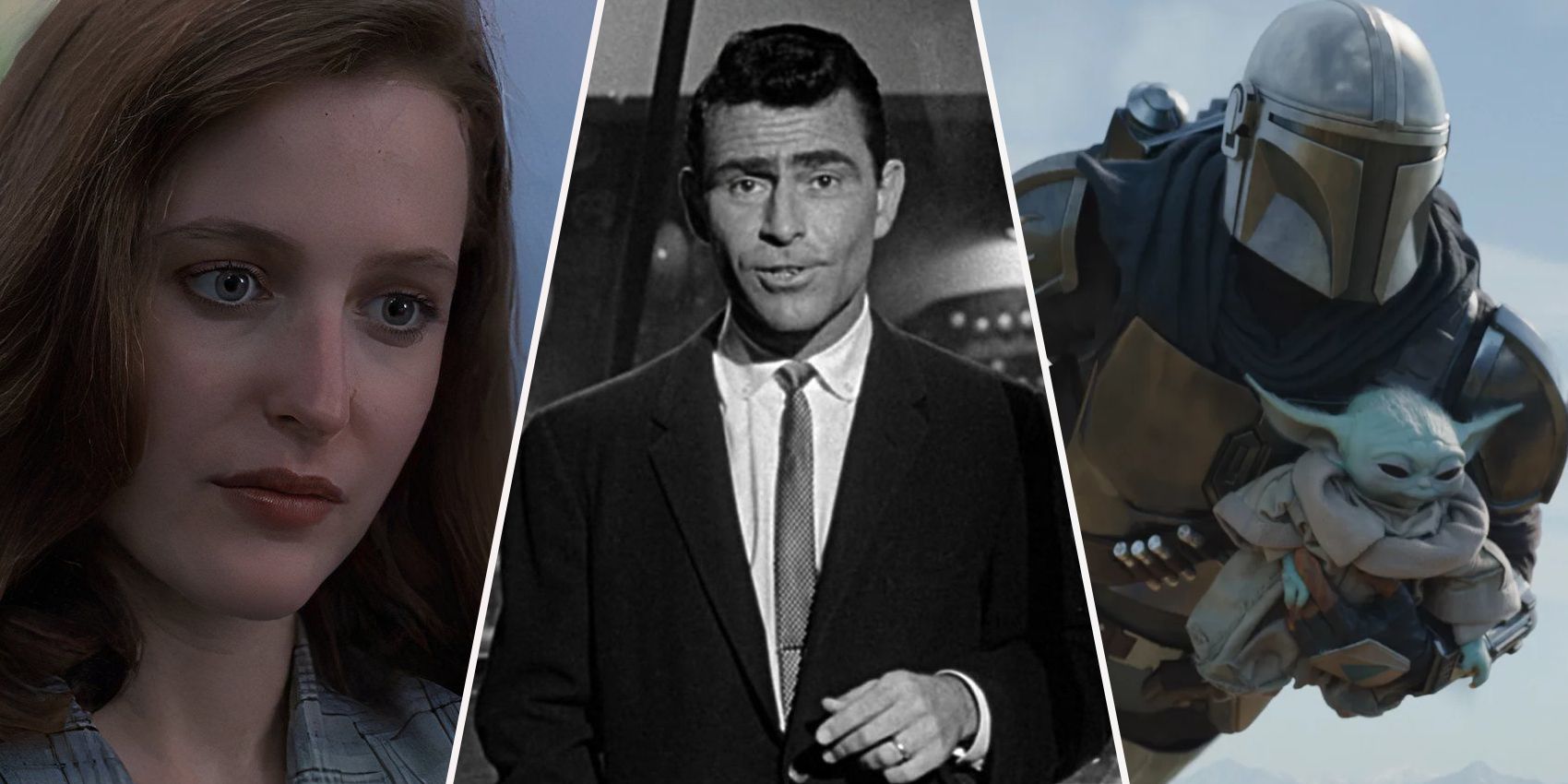
Related
35 Best Sci-Fi TV Shows, Ranked
Sci-fi has been a TV staple for decades, offering viewers classic shows like Star Trek to modern hits like the Star Wars series The Mandalorian.
They keep finding each other, their core selves recognizing one another even when inhabiting vastly different personas and scenarios. In Episode 4, ‘Furs by Sebastian,’ they manifest as Linda and Bruce, a married couple from Long Island, caught up in a bizarre scheme involving a stolen lemur. Despite the absurd context, their interaction reveals a nascent trust and reliance, a flicker of genuine connection forming amidst the programmed chaos.
Later, the simulation sees them as another pair, as con artists at a 1940s séance attempting to steal a lost chapter of Don Quixote, a classic novel by Miguel de Cervantes Saavedra. This focus on Don Quixote isn’t accidental; like Cervantes’ hero, who blurs reality and fantasy, Owen struggles with delusions and paranoia, while the trial itself uses fantasy to supposedly heal real-world pain. The book also appears in one of the initial episodes, as something Annie wishes to read someday. Series creator Patrick Somerville, while speaking to Vulture, explains the connection to the novel’s theme. He said:
“Don Quixote is about a person struggling to tell the difference between his subjective reality and objective reality. Just to throw that big heavy book on the table at the beginning of the series is a way to say, We are interested in these ideas.”
Crucially, Maniac reasons that it’s not the technology, or the programmed fantasies that offer healing, but the spontaneous, shared vulnerability and mutual recognition between Annie and Owen. As Mantleray observes early on, ‘We’re lost without connection.’ Their ability to truly see each other across realities becomes the therapy that the pills and the supercomputer could never quite provide.
It’s here that the show draws parallels with Eternal Sunshine of the Spotless Mind. Like the film, the machine successfully erases the wanted memories, but the emotions and the tangible human connection stay back no matter what. Similarly, Maniac shows the limits of technology by ‘fixing’ the emotional core of a human being.
The Stunning Aesthetics and World-building of Maniac
Visually and conceptually, Maniac is an absolute feast, showcasing Cary Joji Fukunaga’s cinematic sensibility, which elevates every frame, lending both the drab retro-future and the vibrant dreamscapes a distinct, immersive atmosphere. The aforementioned Ad Buddies and Friend Proxy services, the bulky technology, the specific fashion choices — all contribute to a tangible, lived-in reality that feels both strangely familiar and utterly unique.
As Annie and Owen’s journey progresses in the simulation world, Fukunaga masterfully shifts tone and aesthetic providing an experience of different realities. Each fantasy sequence is a fully realized genre piece: the grainy, feathered-hair aesthetic of the ’80s lemur heist (a shout-out to Nicolas Cage and Holly Hunter’s Raising Arizona); the shadowy grandeur of the 1940s séance; the epic scope of the high-fantasy sequence; the absurdity of an alien invasion hearing.
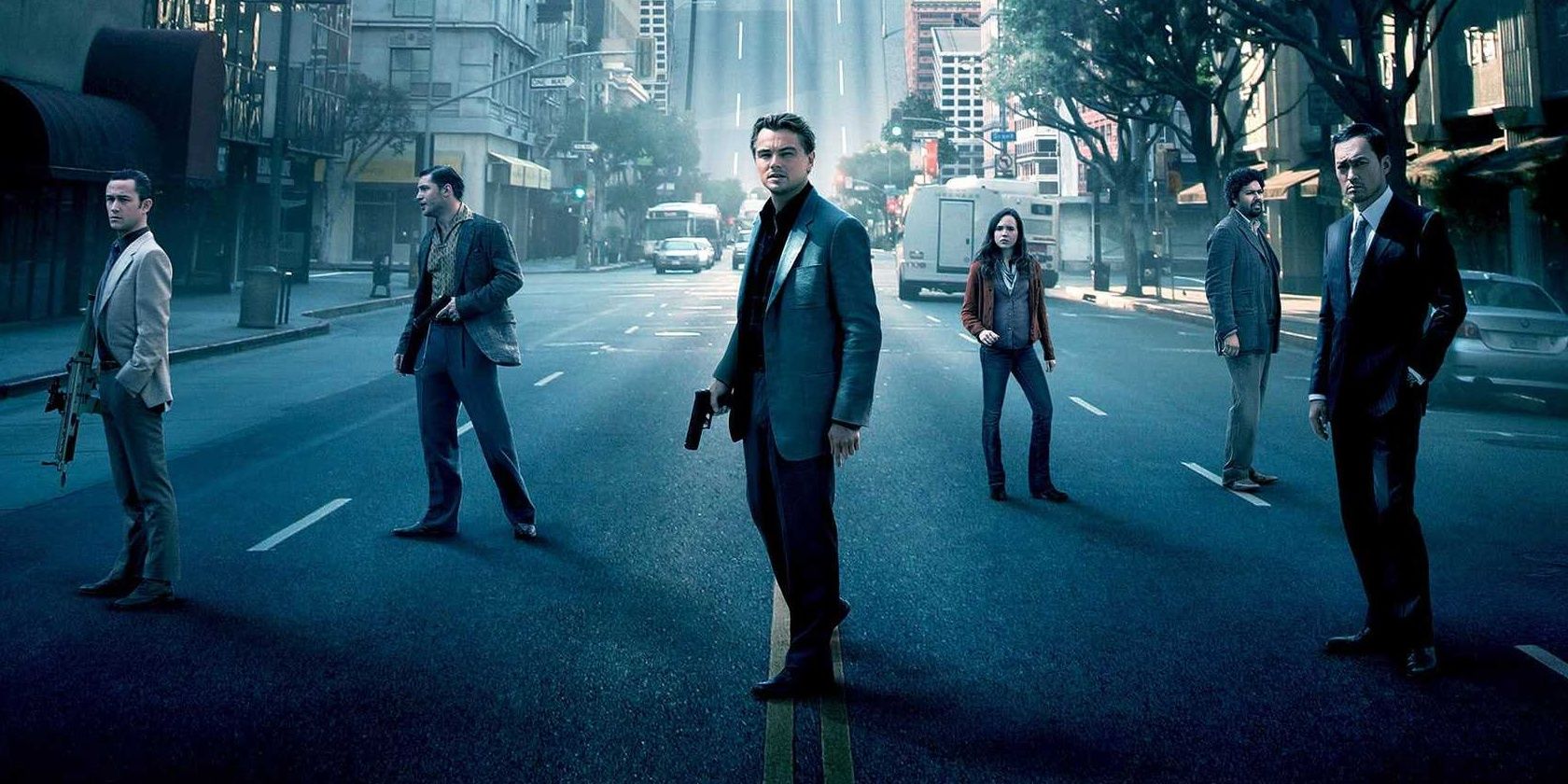
Related
Hollywood Is Still Chasing Inception’s Shadow, a Decade Later
10 Years On, Inception remains among the best of blockbuster filmmaking—but audiences deserve better.
Fukunaga and his design team craft distinct visual identities for each simulation, through color schemes, location and costumes, making these internal journeys as interesting and visually rich as the external reality. Much like the layered dream architecture of Inception, Maniac’s stunning aesthetics and imaginative world-building aren’t just surface pleasures. They are integral to its exploration of consciousness, trauma, and the mind’s capacity to reshape reality in search of healing and connection.
The design of the IBM logo influenced both the NPB logo and the Maniac title logo in the show.
And that’s why, even seven years later, Maniac remains an achievement in that genre that arguably deserved far more sustained attention than it received. Packed with stellar and nuanced performances by Stone and Hill, along with powerful supporting performances, the Netflix miniseries demands to be stood like Severance, Black Mirror and Westworld.
